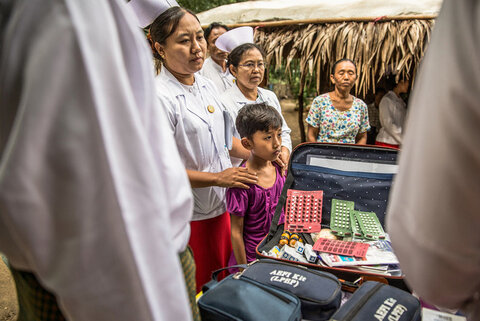New research identifies fresh strategies to end leprosy

New research outlining a global approach to eliminating leprosy has been published by a global collaboration of researchers including the NTD modelling Consortium.
Currently leprosy infects 2-3 million people in 100 countries. Year on year, over 200,000 new cases are diagnosed. As part of the London Declaration on NTDs the international community set a global target of eliminating the transition of leprosy by 2020.
The Novartis Foundation has supported a two year project to assess - and change where necessary - the strategies needed to realise the 2020 elimination targets.
The new research published in two articles in the Lancet Infectious Diseases outlines an action oriented strategy for achieving zero leprosy transition that identifies an integrated approach based on early diagnosis and the use of multi-drug therapy (MDT). The group goes on to identify the tools and approaches needed to accelerate diagnosis and develop better treatments.
Multidrug therapy for leprosy: a game changer on the path to elimination. Smith et al (2017)
The article reviews the historic impact of the widespread free availability of MDT. MDT is shown to be both effective at treating the disease and preventing permanent disabilities, but also stopping close contacts of patients who are exposed to leprosy from the risk of infection.
The paper outlines a strategy to achieve leprosy elimination by interrupting its transmission. The linchpin of the zero-transmission strategy is early diagnosis and prompt treatment of all patients. It argues that leprosy elimination must be redefined as zero transmission in order to achieve zero new infections.
Innovative tools and approaches to end the transmission of Mycobacterium leprae Steinmann et al (2017)
The second article examines four key approaches and tools that are needed to execute the zero-transmission strategy.
Contact tracing and preventative therapy (post-exposure prophylaxis): Contact tracing identifies and examines people who may have come into contact with an infected person. This approach enables earlier diagnosis or allows asymptomatic contacts to be given a preventative therapy. Initial evidence that contact tracing combined with post-exposure prophylaxis is effective in reducing the risk of contact persons developing leprosy.
Vaccines: Administering vaccines to people who are in contact with leprosy patients in combination with the preventive therapy may increase protection for infected persons.
Diagnostic tests: Developing an easy-to-use diagnostic test that can detect leprosy before symptoms appear will enable early treatment and ultimately support the interruption of leprosy transmission.
Elimination Investment Case: Analysis of the cost benefits of different approaches and tools to eliminate leprosy will enable policy makers to better allocate finite resources.
“Leprosy is one of the oldest diseases known to us,” says Ann Aerts, Head of the Novartis Foundation. “With the evidence that we now have, it is finally clear what must happen to make this ancient, stubborn and debilitating disease history. We realize that zero transmission is an ambitious goal, but we believe that a global effort by a coalition of partners and advocates in the fight against leprosy will be able to achieve this.”